- Massive cargo carrying capability
- Superb performance
- Very good range and excellent charging infrastructure
- More expensive in UK than other regions
- Minimalist controls take getting used to
- No dashboard display
Range (WLTP): 298-315 miles Top Speed: 135-150mph 0 to 60: 3.5–4.8sec Cost/Mile (@14p/kWh): 3.3-3.5p
Introduction
The Tesla Model Y has been one of the most hotly anticipated EVs, but the UK has been slow to receive it. The car has been out in the US since March 2020, in China since the beginning of 2021, and key countries in Europe have been receiving deliveries of the car since August. Finally, Tesla opened orders for the Model Y in the UK in mid-October, with deliveries due in March 2022 for the Long Range version, although the Performance will arrive some months after that. We got a chance to drive a European specification version from the Netherlands to provide a full assessment ahead of the arrival early next year.
Price and Options
Although the Model Y we had was a left-hand-drive Long Range, other than having the steering wheel on the wrong side this car will be identical to what will be seen on UK roads in a few months. The UK is getting the same two Model Ys as elsewhere – the Long Range and Performance, with £10,000 separating them in price. Both are dual motor, but while the Long Range has a considerable 384hp, the Performance has an even more considerable 456hp.
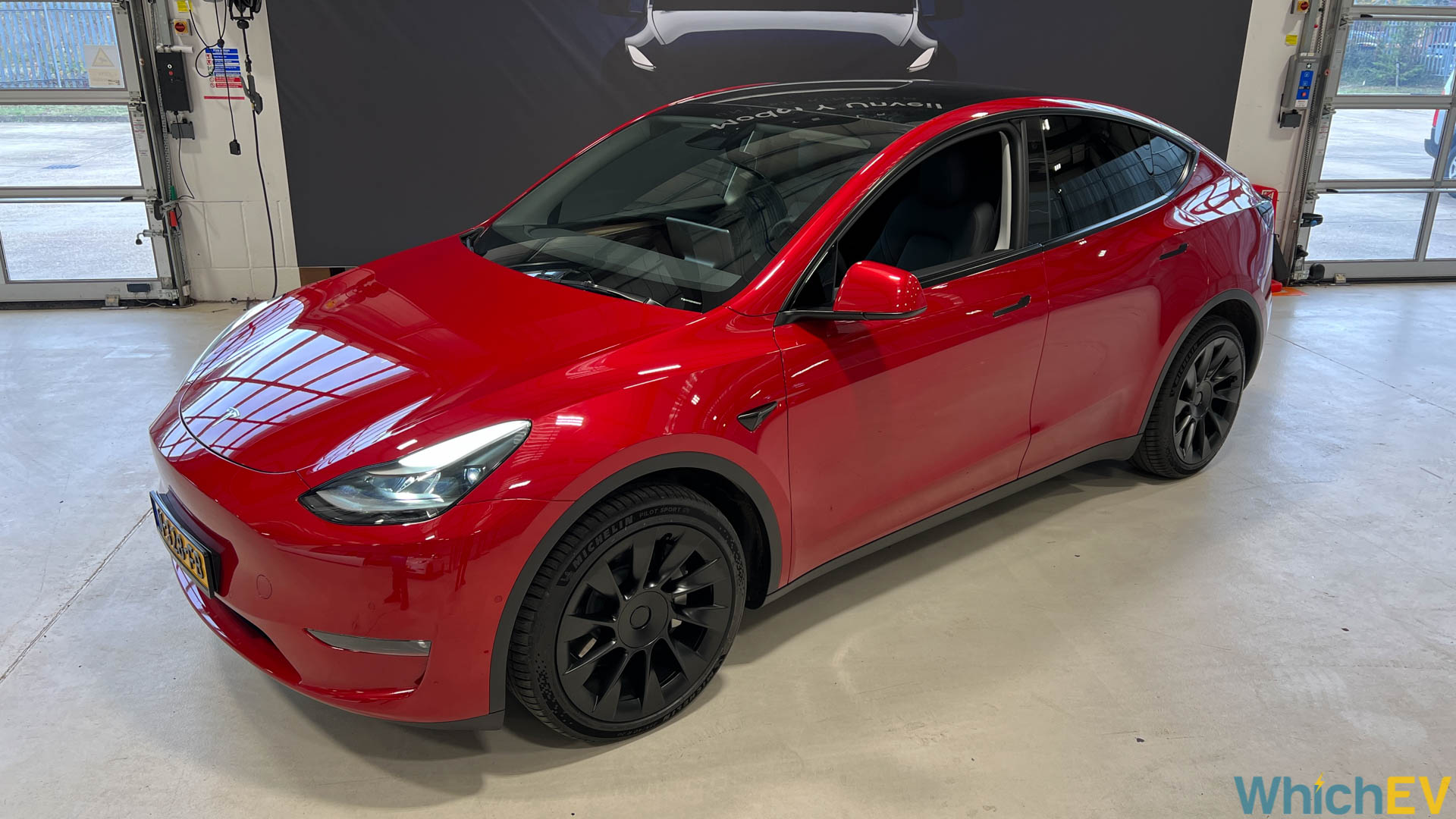
Although Tesla plans to supply Model Ys from Berlin eventually, the initial cars coming to the UK will be made in China. The Model 3s made in China are generally considered to be better built than the ones coming out of the USA, ironically. Elon Musk had hinted at a rear-wheel-drive Model Y in the past, but this looks likely never to happen.
Like other Teslas, the Model Y’s options list is short, making specifying your car much easier than most other brands. As before, while you can test drive at Tesla showrooms, you buy online, following through a simple scrolling process where you choose between colour, wheel design, and interior alternatives, with few possibilities in each case.

The basic colour is white, with black, grey, or blue £1,100 extra. The red of our review car is £2,100 more. In other words, the colour choices are exactly the same as the Model 3. The Model Y Long Range comes with 19in Gemini wheels as standard, but our review car had the optional 20in Induction upgrade rims, which cost £2,100 extra. The Performance has 21in versions of the Uberturbine wheels that the Tesla Model 3 Performance now comes with, and there are no other options. There are two interior choices – black or white, with the latter costing £1,100 more – but right now, the 7-seat version of the Y you can specify in the USA is not available in the UK or Europe.

There is one catch with the UK release. It's a bit more expensive than it is in other regions, including Europe. The Model Y Long Range is £54,990, £6,500 more than the Model 3 Long Range. The Performance version is £64,990, £5,000 more than the Model 3 equivalent. That places the Long Range in the same price bracket as the Volvo XC40 Recharge Twin AWD, Ford Mustang Mach E Extended Range AWD, and well above the Audi Q4 e-tron 50 (until you add a few options). The Performance is priced similarly to the Jaguar I-Pace or Mercedes-Benz EQC Sport. However, the Model Y does have some advantages over all its competitors at Long Range and Performance levels, even if it has left the door open for cheaper electric SUVs and its own Model 3 sibling.
Exterior Design
If you look at the Model Y side-by-side with the Model 3, the family resemblance is obvious. The Model Y is built in the same platform as the Model 3 and from the front and side looks just like a tall version of the latter. Aside from the extra vertical space, this has allowed the Model Y to be one thing that many Model 3 owners wish their car was – a hatchback. The SUV format is also hugely popular in Europe, getting close to half the market every year. There is a weight penalty for this format, though, with the Model Y being 150kg heavier than an equivalent Model 3.
The Y arrives with the black edge trim of the facelift Tesla Model 3 rather than the chrome the 3 originally had. Most people prefer this look, although not everyone. The black finish continues round the wheel rims, to accentuate that crossover SUV look and add some durability – a feature you don’t get with the Model 3. Amazingly, though, Tesla has managed to fatten up the Y while maintaining the incredible drag coefficient of the 3 – just 0.23. Only the Porsche Taycan is more streamlined at 0.22.
Like the 3, the default mode of entry is with a key card until you set your phone up as a Bluetooth key, which in theory is more secure than a regular keyless entry system because the Bluetooth signal used can't be cloned so easily, as it is encrypted. You can still add a pin to start for even greater security. Once the car is unlocked you can press the streamlined handle in to open the car. It doesn’t present itself as it does in the Model S and X.
Interior Comfort
The two Y interior options are the same as the 3's. The basic style is this black, with seat material made from an artificial leather-like substance. Inexplicably, Tesla has persisted with the brown wood veneer on the dashboard for the black option. We really hoped this would disappear with the facelift refresh of the Model 3 last year. The £1,100 white seat option swaps the wood veneer for white. However, it’s not clear what else you get for the extra money.
The seat styles are the same as a Model 3, with a non-adjustable head rest. However, with a higher position the Y could be more comfortable for some drivers and passengers. We certainly have always found Tesla seats to be good for long journeys. The seats are 12-way adjustable with a memory function. The seat adjustments have their own buttons on the side, but the memory aspect requires the LCD, like most things in Tesla’s world. On the plus side, you can associate this with a key and paired smartphone, so they adjust automatically for each driver.
The front seats are heated, which you also must control via the LCD panel, although the icons are permanently along the bottom of this display. This isn’t the case for the heated steering wheel, but at least this is now included. It wasn’t in the original Model 3.
The dual wireless smartphone chargers remain a unique feature for the Model 3 and Y. Behind this is a large cubby with a sliding door, then a couple of cupholders. There’s another decently sized cubby under the armrest, which also contains a car power output port. The finish in this central console is matte like the facelift Model 3 with some stitching, which provides a classier look than the glossy piano black of the original Model 3. It also won’t show fingerprints in the same way.
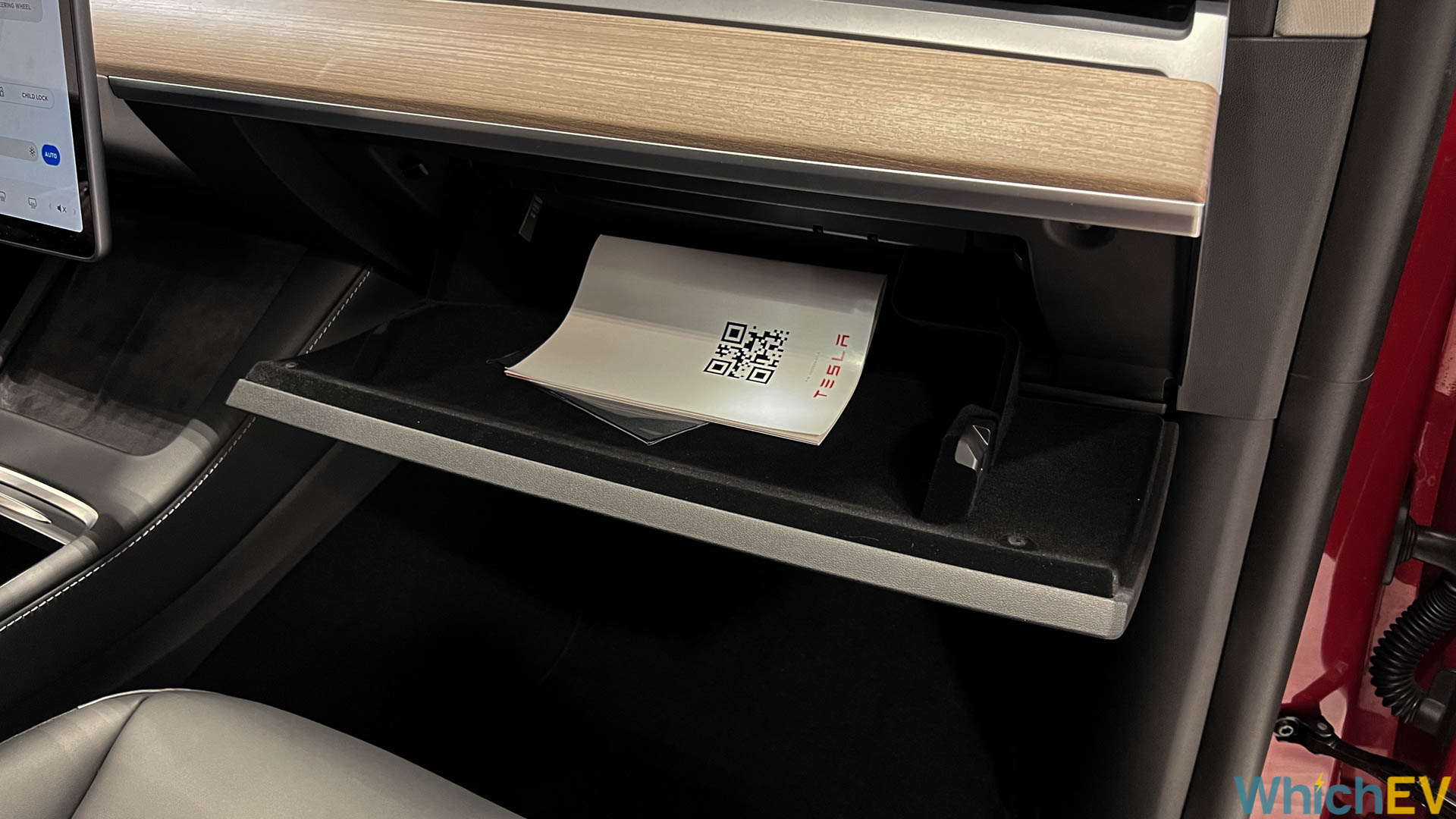
Another thing that operates via the LCD panel is the glove compartment, which is actually a bit of a pain. Inside is a USB port intended for use with a storage stick for the Sentry mode, which records video if motion is detected when the car is parked. This appears to be supplied as standard now on new Tesla cars.
If the front of the Y just feels like a 3 with a bit more headroom, the extra rear seat space is more obvious. The rear seats are heated too, but this can only be operated from the front – another drawback of that focus on the central LCD. The middle seat, as always, is there primarily in case you really need a fifth passenger, but it's heated too and more comfortable than many. It’s also wider than on the 3. There’s some space underneath the console in front for feet, which adds to the middle passenger comfort. Alternatively, you can fold down the back to make arm rests and a couple of cupholders for outer seat passengers.
From the back, aside from the extra height, the obvious difference to the 3 is the Y’s panoramic sunroof, which stretches from just in front of the driver and front passengers head all the way back to the hinge on the hatchback. This provides a greater sense of space than a Model 3, although you still can’t open it and there’s no blind. Rear seat passengers benefit from separate air conditioning vents and a couple of USB C ports for charging their phones. There are ISOfix points on the two outer rear seats too.
Storage and Load Carrying
While having a bit more head room and space for rear passengers might sway you towards buying a Model Y over a Model 3, the main reason for the decision will most likely be the extra boot space – and there is a lot of it. The Model 3 doesn’t have a small boot in its class, and still has the frunk for additional cargo. But the Model Y goes way beyond this.
The standard boot is huge, and there’s a sizeable extra compartment under the boot floor plus a small extra area behind that. The total is a whopping 854 litres. Like the Model 3, the Model Y’s boot is electric, although it doesn’t have a kick release. However, there are buttons on the left to drop the rear seats forward automatically, which is extremely convenient when adding cargo, and there’s no blind roller or shelf to remove first, although you might wish there was if you want to hide the fact there is luggage in the rear.
Although dropping the seats forward with the buttons provides a 60/40 split, you can also just drop the middle seat forward on its own, making it possible to transport long items and still have two rear passengers – for example skis or a Christmas tree. But if you do drop all the seats, the result is an absolutely huge 1,869 litres. That's more than an Audi e-tron or Skoda Enyaq iV. But unlike these two cars, the Y has a frunk, too – and it’s a big one. The total capacity is 117 litres, just 54 litres less than the actual boot on a Honda e.
Overall, Tesla claims 2,100 litres of luggage capacity in total, which is not a whole lot less than a Tesla Model X. Both versions of the Y can tow up to 1,600kg, too, although the Tesla Design Studio currently only suggests this can be obtained as a post-sale extra rather than something you can specify at purchase to be fitted before delivery. No price is listed, either. Overall, the Tesla Model Y is a class leader for cargo capacity, making it a top choice if load lugging is your priority.
The biggest shock when you first get into a Tesla Model 3 for most people is how minimalist it is, and the Model Y is exactly the same. Almost all functions are controlled via the sizeable 15in LCD panel. However, there are a few things that aren’t controlled in this way.
If you've got your phone set up as a key, once you’re in the driver’s seat, you can simply press the brake pedal to start the system up. Otherwise, you will need to touch the key card at a specific point on the central console, and then hit the brake pedal.

Choosing drive is like a Mercedes automatic of recent years, and like the Tesla Model S, X and 3. This isn’t a surprise because this system was originally from Mercedes in earlier Model S cars. You pull the right stalk down for drive, up for reverse, and push the button on the end for park. You can also pull the stalk down once more to engage adaptive cruise, and once more again for the full Autopilot. But more on that later.
If you have Auto Hold turned on, the handbrake engages automatically when the car has come to a halt. This is another thing you have to delve into the LCD menu to enable or disable – there is no separate button. The left-hand stalk is for indicators, and you can press the button on the end for a quick windscreen wipe. However, you can’t use this stalk to control windscreen wiper speed – yet again, this is something you can only do via the LCD, which has raised some safety concerns, particularly in Germany. There is no rear windscreen wiper either.
There are two dials on the spokes of the steering wheel. The left-hand one is for controlling media, and the right-hand one is for the adaptive cruise. As already mentioned, at long last, the wheel is now heated, which it wasn't on the original 3 or first Ys in America. The lights also don't have any separate control, other than pushing the left stalk for main beams, although the automatic function works fine, including automatic dipping.
Opening the doors from inside is a bit unorthodox, using a rather innocuous button on the handle, although this is now labelled more obviously than it was on original Model 3s. It still catches some people out until they get used to it, leading them to pull the emergency lever, which can damage the windows as it doesn’t drop them down a fraction before opening the door.
Another thing missing from a “regular” car is a dashboard display. This a surprise when you first get into a 3 or Y, but you get used to it, although the S and X do have this. We still hope that one day Tesla provides a HUD instead. The lack of a dashboard display means that even the speed must be viewed on the 15in screen, although it’s placed on the closest corner in large numbers so is easy to see out of the corner of your eye while driving.
During normal driving, the panel is basically divided into two sections, with the third closest to the driver showing status icons and a schematic of the car that varies with context. When parking, it illustrates sensor warnings and provides a really useful distance reading to the cars in front and behind when parallel parking, making it really easy to place your vehicle right in the middle of the space. During this mode, the other two thirds of the screen provide a big rear view and side views, which are essential because the rear mirror view is limited, but there’s no front camera view (even though the car has one) and no 360 view, although Tesla has hinted that this might arrive in a future firmware update.
When you are stationary, you can use the car schematic to lock and unlock, open the boot and bonnet, and open the charge port. When driving, the car model switches to being situated in a sensor view of the surrounding road markings and traffic. It even detects animals, cones, and traffic signals. This functions as your blind-spot detection. Below this is the place where you can call up screen-based controls over the windscreen wipers – not as intuitive as a dedicated steering wheel stalk.
The remaining two thirds of the screen are taken up by the satnav map. This supports live traffic so long as you have a premium connectivity account. Sometimes you get a full year when you buy a car, sometimes just one month, but either way after the free period it's £9.99 a month. Premium connectivity provides other functions we will explain later. The satnav is easy to enter addresses into, and you can also send them directly to the car via a smartphone. However, we do wish the next turning information was a bit bigger and more prominent for people with middle-aged eyesight.
At the top of the screen are icons for functions like the Sentry mode, which monitors the car when parked and makes a recording when motion is detected. This is a great function, although it saps power quite fast (about 1% a day). There’s also a Profile, where you can recall memorised seat positions and other settings. At the bottom of the screen is a row of icons to reach things like front heated seat controls, and the air conditioning. The latter has a function where you can simply drag your finger around to direct the air from the vents.
The bottom also provides access to the functions that really separate the Tesla infotainment system from other cars. There’s a built-in Web browser, which works via Premium Connectivity or a tethered phone data service. The bottom icons also provide access to the huge range of entertainment features. DAB radio is of course present, but also Spotify. Tesla provides a premium Spotify account with Premium Connectivity, or you can log into your own to share playlists. You also get TuneIn streamed radio, and a Toybox with a host of games and fun stuff like a whoopie cushion that makes bottom noises. You can even access your Netflix account and YouTube via Theater, providing plenty of fun to while away charging times.
The car settings are extensive and well laid out into sections that make sense. You can adjust the steering mode from comfort to sport, but this car doesn’t have adaptive air suspension, unlike the S and X. You can switch the power to Chill for drivers who might not want the brain-numbing Tesla acceleration (but then why did you buy this car?). However, there is no specific eco mode, and you can’t alter the way regenerative braking works. This section is also where you configure how often you get software updates. Over-the-air updates have long been something Teslas benefit from like no other car on the market.
Performance and Driving
One of the reasons you buy a Tesla beyond the technology is the driving experience. All Teslas are fast, and the Model Y is no exception. The Long Range we test drove takes just 4.8 seconds to hit 60mph, with a top speed of 135mph. Although the Jaguar I-Pace and Volvo XC40 are faster, it’s not by much, and in the real world you won’t notice the difference. In the US, you can already get a $2,000 aftermarket software-based Acceleration Boost for the Model Y Long Range that drops the 0-60mph to 4.2 seconds. We have no word on whether this will be available in the UK, but it is for the Model 3 Long Range. So if you want a Long Range that can beat the Jaguar, Volvo and Mercedes competition, this will probably be available.
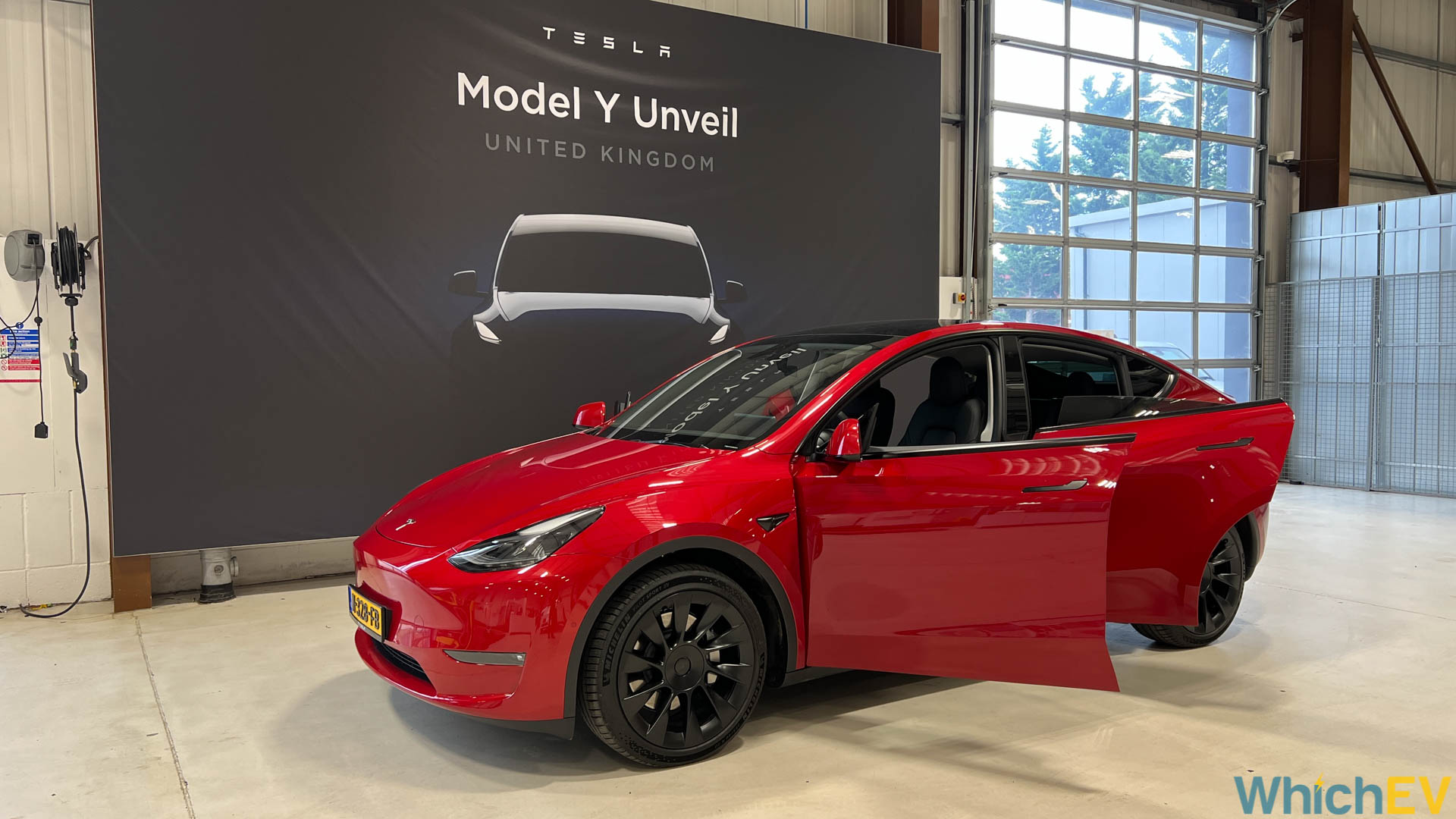
However, if you really want the most stupidly quick mid-sized SUV around, the Performance Model Y takes just 3.5 seconds to hit 60mph and has a top speed of 150mph. Right now, there isn't a non-Tesla SUV that's quicker. The Ford Mustang Mach-E GT will match it, when it arrives, and there is version of the Kia EV6 on the cards that's comparable too. But the only SUV that will go faster is a Tesla Model X Performance. You probably don't need an SUV that fast anyway. The Long Range version will be enough for most people.
Handling is also incredibly flat for such a tall car because the battery weight is so low. The all-wheel drive keeps the car on the road with ease around corners. This is another effortlessly quick Tesla, which you can drive with real gusto. It sits beautifully on the motorway too. However, this is one area where a Tesla Model 3 wins out easily. When our colleague in California tried the Model Y Performance last year, he found the handling unbelievable for an SUV, but the Model 3 Performance is in a league above. If you want an EV with the sportiest feel, either the Model 3 Performance, Porsche Taycan or Audio e-tron GT should still be your focus. But this is the best handling electric SUV we have tried, although the Ford Mustang Mach-E also ranks highly for fun.
Range and Charging
Tesla generally reigns supreme for range, as well. However, the Model Y doesn’t sit head and shoulders above the competition, surprisingly. The Long Range offers 315 WLTP miles, and the Performance 298 miles. These are still great figures, but competitors like the Volkswagen Group's electric SUVs are on par and the Mustang Mach-E Extended Range is comfortably ahead. But that has a bigger 88kWh battery and this car only officially offers 75kWh, although you're never quite sure what the true gross capacity is with Tesla.

In other words, this car isn't quite such a mile-muncher as the Model 3 Long Range and Performance, but it's on the top end of electric SUVs. Of course, what no other non-Tesla SUVs have at their disposal (yet) is the Supercharger network, which makes long distances in any Tesla much less painful. Unlike the Model S and X, Tesla switched to a standard CCS charge port for the 3 and Y. You just push the charge cover to open it.
AC charging is supported up to 11kW, and if you do have three-phase power it will take 8 hours 15 minutes to charge from full to empty. A 7kW supply will take more like 12 hours. DC charging goes all the way up to 250kW officially, so on a V3 Tesla Supercharger or IONITY 350kW supply, you can get from 10 to 80% in just 25 minutes. In other words, long journeys will just require a toilet break and a coffee every couple of hundred miles to get a good capacity back in the car. You will need this slightly more frequently than with a Model 3 Long Range or Performance, but not by much.
Running Costs
If the Model Y doesn’t dominate on pure range, it is still a very efficient car. The Long Range officially manages 4.2 miles per kWh, and the Performance 4 miles per kWh. Although you can’t get 14p per kWh from any energy supplier anymore, we will still use this figure so you can compare back to our previous reviews. Using this figure, the Model Y Long Range would cost 3.5p per mile and the Long Range 3.3p per mile, which is much cheaper than most electric SUVs and even beats the VW ID.4. The Ford Mustang Mach E AWD is notably more expensive to run. But the Model 3 is notably cheaper.
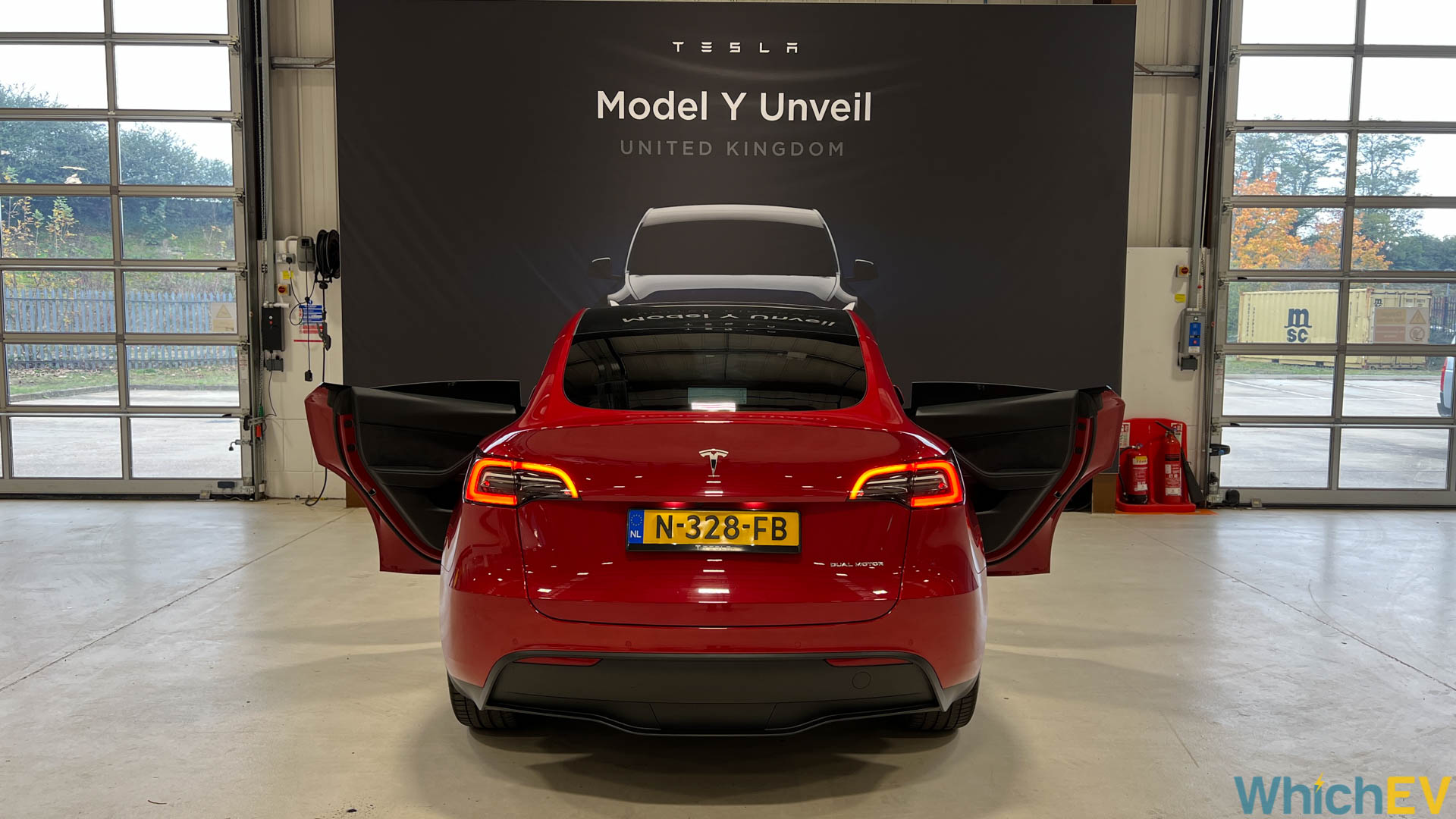
Insurance groups haven't been released yet, but if the Model 3 is anything to go by, the Model Y will probably be in group 50, so insuring it will be expensive. The warranty is decent but not up to the level of Korean cars. The basic guarantee is four years or 50,000 miles. However, the battery warranty is for 8 years or 120,000 miles, for 70% retention, which is more generous than most.
Safety
The Model Y doesn't have a Euro NCAP rating yet, but the Model 3 has 5 stars, and the Y has five stars from the US National Highway Traffic Safety Authority. So it is highly likely that the Y will get a five-star Euro NCAP rating. It is packed with safety features and has a very protective shell for passengers.
Like all other new Teslas, the Model Y has emergency braking, collision warning, and blind-spot monitoring. There's a dashcam built in, and so long as you have a Flash Memory drive installed in the USB port in the glovebox, it will record events when you have an accident or press the horn. This is also used for Sentry mode, which we mentioned earlier.

Cream of the crop for safety tech, however, is Autopilot, which is standard on all Teslas. Pull the drive stalk down once more when in forward motion and you get adaptive cruise. But if you're on a motorway and you don't fancy steering, pull the stalk down one more time and Autosteer is enabled. This will sense the road markings and take care of cornering. You do need to keep your hands on the wheel and give it a little jiggle every so often to show you're awake, but this is one of the most relaxing cruise controls around. The steering wheel dial on the right moves speed limit up and down and you can jog it left and right to alter how much space to leave in front.
Of course, Tesla is already beta testing self-driving on city streets in the USA. You can buy into that in advance with the FSD option for £6,800. But you don't get much else with this other than Traffic Light and Stop Sign control, now that Tesla has added a rung in between it and basic Autopilot called Enhanced Autopilot, which costs £3,400. This gives you plenty of extra features for less, all of which are also in FSD, but for now you’re not getting much more with the latter.
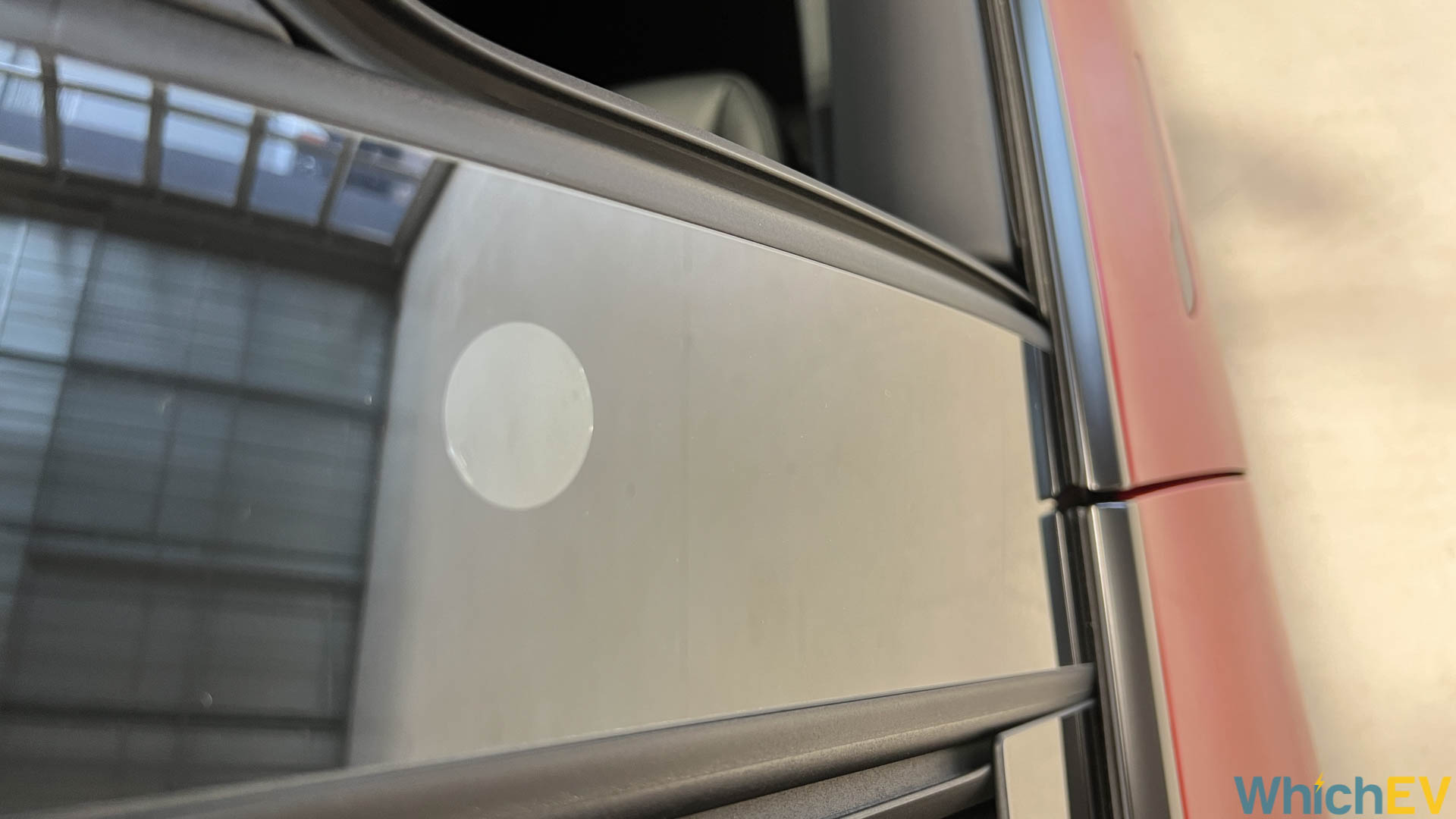
The extra features include Navigate on Autopilot, which allows the car to change lanes by simply indicating and having a clear space to move into. Also included is Autopark, which frankly doesn't work that well with parallel parking in narrow British streets. Summon and Smart Summon are included, which let you lead the car out of a parking space that is too tight to open the doors. It’s useful if you have a narrow garage.
Overall, the Model Y like other Teslas is packed with safety tech, and in general it’s more seamlessly woven into the driving experience than with some cars that provide, for example, distracting lane departure warnings that you might find so annoying you turn the whole system off.
| Price: | Long Range – £54,990; Performance – £64,990 |
| Range (WLTP): | Long Range – 315 miles; Performance – 298 miles |
| Charge time (7.4kW): | 12 hours |
| Charge time (50kW, 80%): | 60 minutes |
| Charge time (250kW, 80%): | 25 minutes |
| Battery: | 75kWh |
| On Board Charger: | 11kW |
| Cost per mile*: | Long Range – 3.3p; Performance – 3.5p |
| 0-60mph: | Long Range – 4.8 seconds; Performance – 3.5 seconds |
| Top Speed: | Long Range – 135mph; Performance – 150mph |
| Power: | Long Range – 384hp; Performance – 456hp |
| Wheels driven: | All-wheel-drive |
| Cargo: | 854 litres; 1,869 litres with rear seats down; frunk – 117 litres |
*based on electricity costs of 14p per kWh




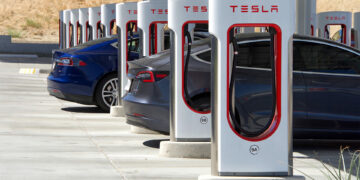

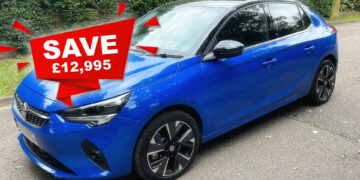

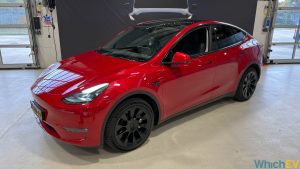

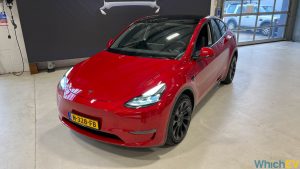



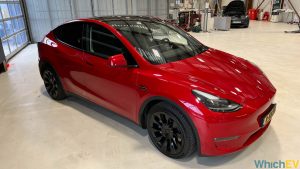
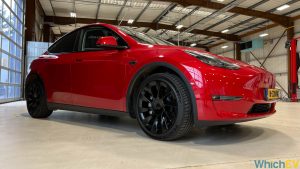
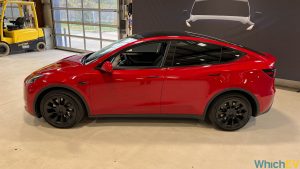



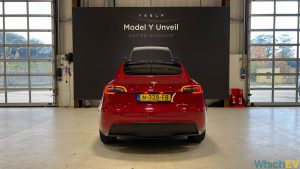

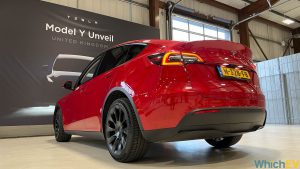
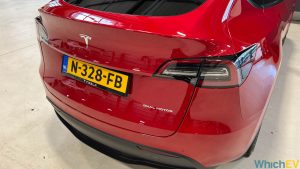
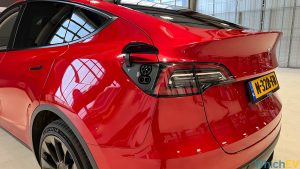
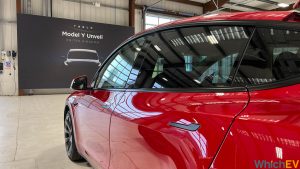
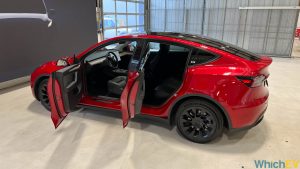
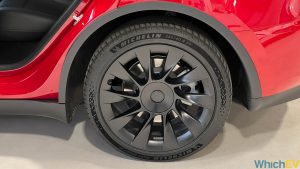
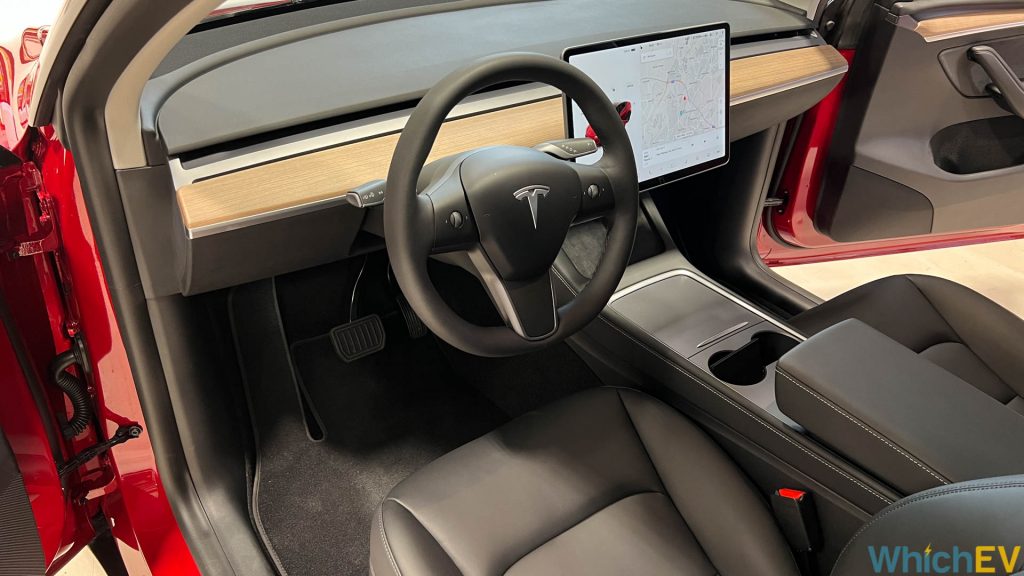

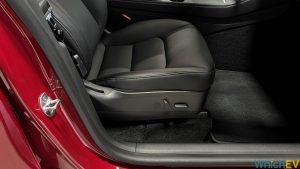

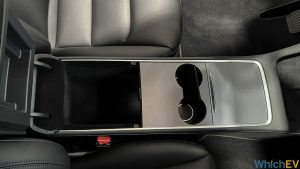
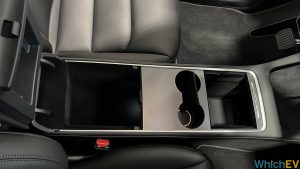


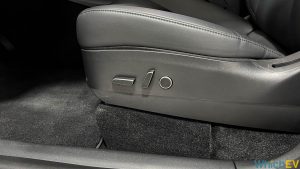
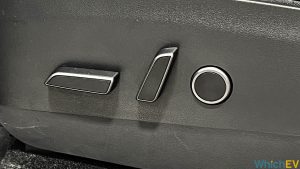
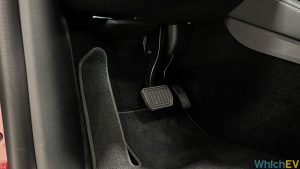


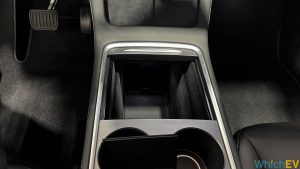

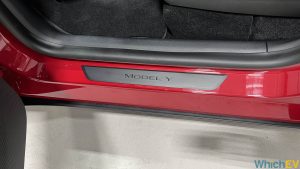


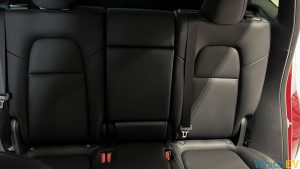
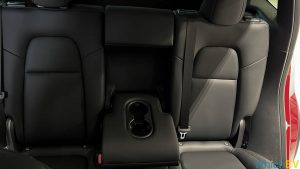
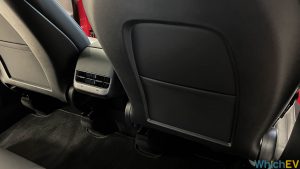

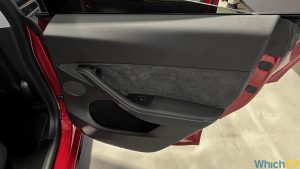
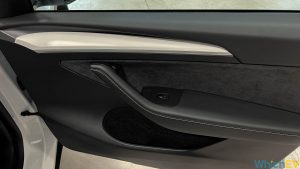



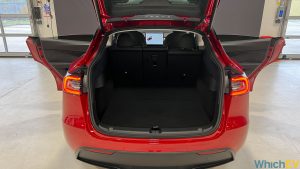

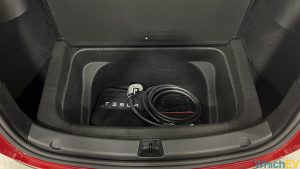
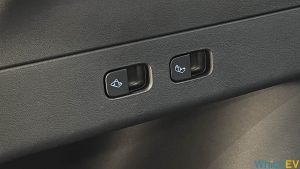

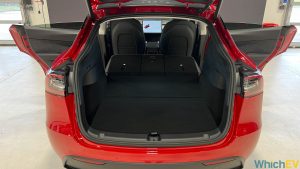
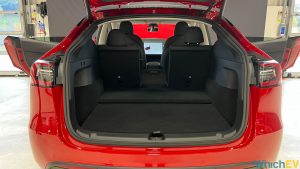
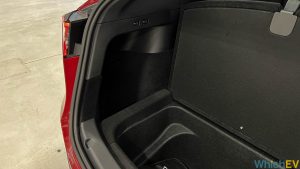
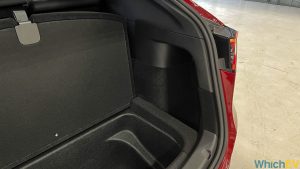




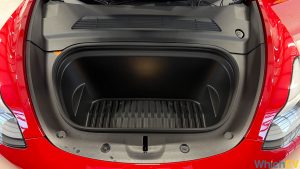
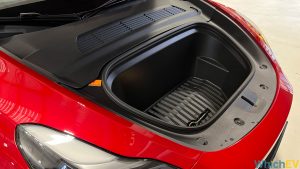

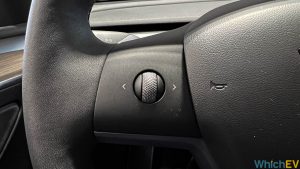
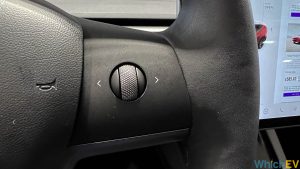
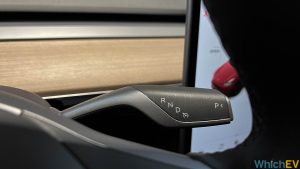
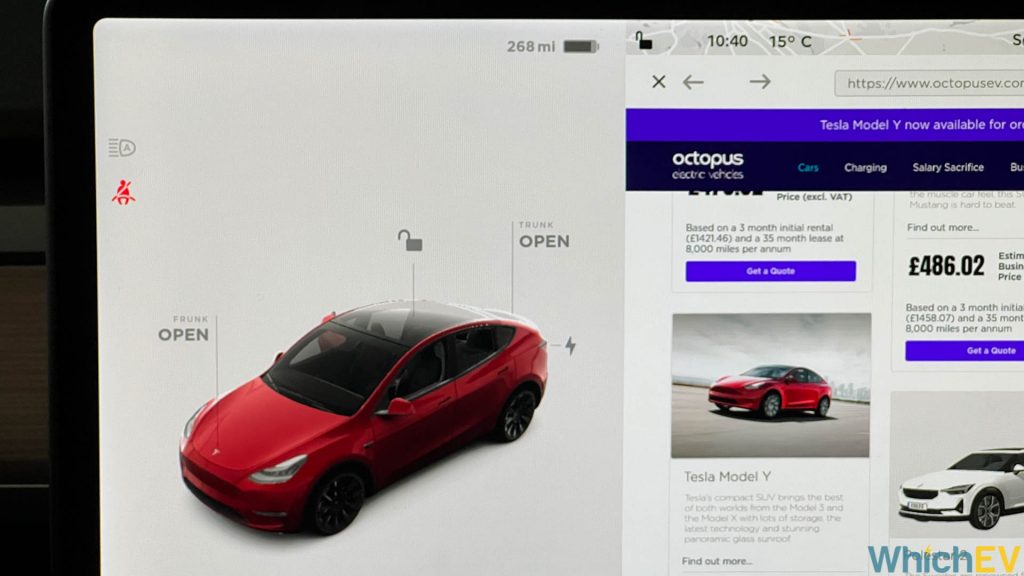
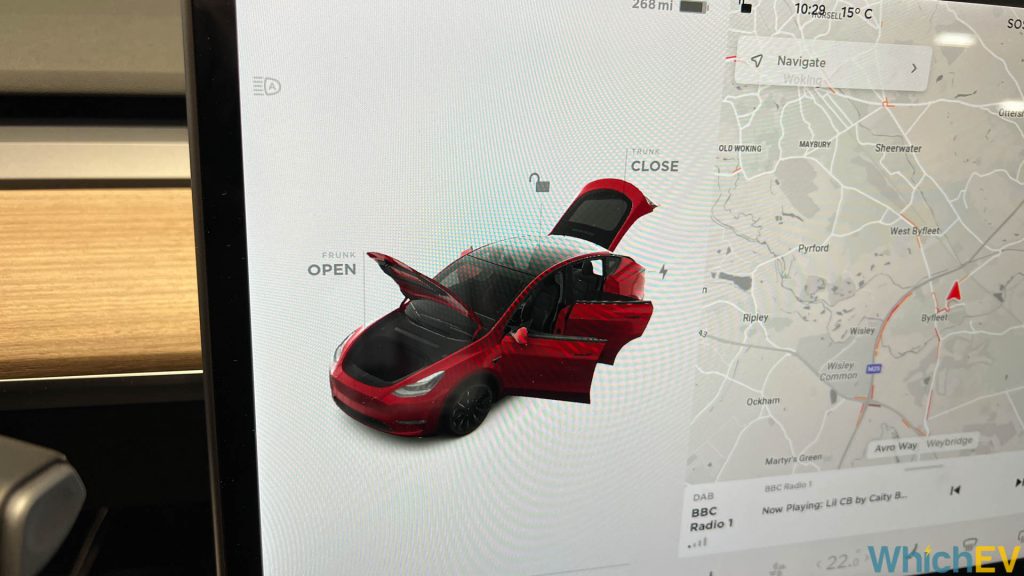

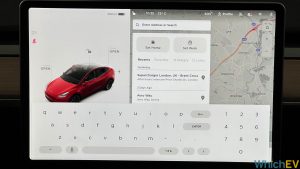
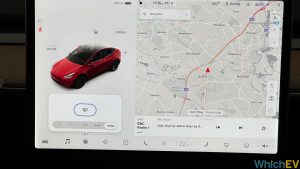
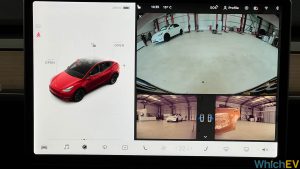


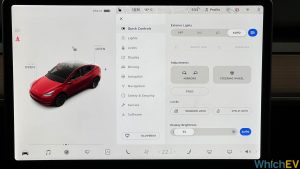



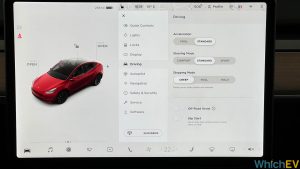
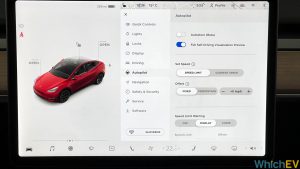
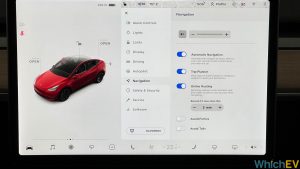
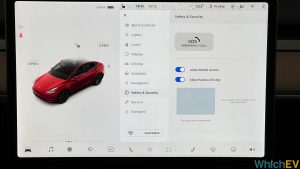


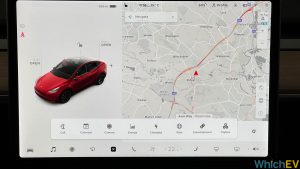





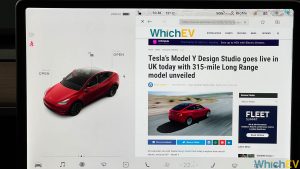











Discussion about this post